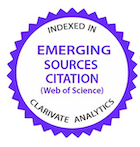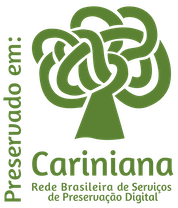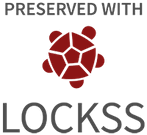Eficiência do uso da radiação solar e proteína bruta do sorgo forrageiro são modificadas pelo manejo de cortes
DOI:
https://doi.org/10.1590/1809-6891v20e-46662Resumo
O objetivo deste trabalho foi determinar o crescimento, a eficiência do uso da radiação solar e a proteína bruta do sorgo forrageiro submetido a diferentes manejos de cortes. Foi utilizado um esquema unifatorial em delineamento de blocos casualizados (manejo de cortes), que variou do tratamento sem corte até quatro cortes. O primeiro corte ocorreu 44 dias após a semeadura, o segundo 23 dias após o rebrote, o terceiro 25 dias após o rebrote e o último após 40 dias do rebrote. A eficiência do uso da radiação solar do sorgo forrageiro reduziu com o aumento do número de cortes. A proteína bruta das plantas de sorgo aumentou com o manejo de cortes. Portanto, para a cultura do sorgo forrageiro, recomenda-se restringir o manejo de cortes para até três vezes durante o ciclo, desde que exista potencial produtivo de biomassa, e esses cortes devem ocorrer a cada 25 dias, dependendo do acréscimo de matéria seca. Não se recomenda a realização de mais do que três cortes, devido à baixa eficiência na utilização da radiação solar, à reduzida acumulação de matéria seca e à baixa qualidade desse material.
Palavras-chave: foragem; pastagem; afilhamento.
Downloads
Downloads
Publicado
Como Citar
Edição
Seção
Licença
Copyright (c) 2019 Ciência Animal Brasileira

Este trabalho está licenciado sob uma licença Creative Commons Attribution 4.0 International License.
Autores que publicam nesta revista concordam com os seguintes termos:
- Autores mantém os direitos autorais e concedem à revista o direito de primeira publicação, com o trabalho simultaneamente licenciado sob a Licença Creative Commons Attribution que permite o compartilhamento do trabalho com reconhecimento da autoria e publicação inicial nesta revista.
- Autores têm autorização para assumir contratos adicionais separadamente, para distribuição não-exclusiva da versão do trabalho publicada nesta revista (ex.: publicar em repositório institucional ou como capítulo de livro), com reconhecimento de autoria e publicação inicial nesta revista.
- Autores têm permissão e são estimulados a publicar e distribuir seu trabalho online (ex.: em repositórios institucionais ou na sua página pessoal) a qualquer ponto antes ou durante o processo editorial, já que isso pode gerar alterações produtivas, bem como aumentar o impacto e a citação do trabalho publicado (Veja O Efeito do Acesso Livre).






























